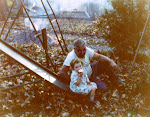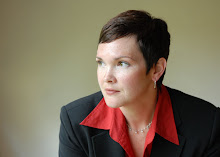Christmas Poem
TWAS THE NIGHT BEFORE CHRISTMAS,
HE LIVED ALL ALONE,
IN A ONE BEDROOM HOUSE MADE OF
PLASTER AND STONE.
I HAD COME DOWN THE CHIMNEY
WITH PRESENTS TO GIVE,
AND TO SEE JUST WHO
IN THIS HOME DID LIVE.
I LOOKED ALL ABOUT,
A STRANGE SIGHT I DID SEE,
NO TINSEL, NO PRESENTS,
NOT EVEN A TREE.
NO STOCKING BY MANTLE,
JUST BOOTS FILLED WITH SAND,
ON THE WALL HUNG PICTURES
OF FAR DISTANT LANDS.
WITH MEDALS AND BADGES,
AWARDS OF ALL KINDS,
A SOBER THOUGHT
CAME THROUGH MY MIND.
FOR THIS HOUSE WAS DIFFERENT,
IT WAS DARK AND DREARY,
I FOUND THE HOME OF A SOLDIER,
ONCE I COULD SEE CLEARLY.
THE SOLDIER LAY SLEEPING,
SILENT, ALONE,
CURLED UP ON THE FLOOR
IN THIS ONE BEDROOM HOME.
THE FACE WAS SO GENTLE,
THE ROOM IN SUCH DISORDER,
NOT HOW I PICTURED
A UNITED STATES SOLDIER.
WAS THIS THE HERO
OF WHOM I'D JUST READ?
CURLED UP ON A PONCHO,
THE FLOOR FOR A BED?
I REALIZED THE FAMILIES
THAT I SAW THIS NIGHT,
OWED THEIR LIVES TO THESE SOLDIERS
WHO WERE WILLING TO FIGHT.
SOON ROUND THE WORLD,
THE CHILDREN WOULD PLAY,
AND GROWNUPS WOULD CELEBRATE
A BRIGHT CHRISTMAS DAY.
THEY ALL ENJOYED FREEDOM
EACH MONTH OF THE YEAR,
BECAUSE OF THE SOLDIERS,
LIKE THE ONE LYING HERE.
I COULDN'T HELP WONDER
HOW MANY LAY ALONE,
ON A COLD CHRISTMAS EVE
IN A LAND FAR FROM HOME.
THE VERY THOUGHT
BROUGHT A TEAR TO MY EYE,
I DROPPED TO MY KNEES
AND STARTED TO CRY.
THE SOLDIER AWAKENED
AND I HEARD A ROUGH VOICE,
'SANTA DON'T CRY,
THIS LIFE IS MY CHOICE;
I FIGHT FOR FREEDOM,
I DON'T ASK FOR MORE,
MY LIFE IS MY GOD,
MY COUNTRY, MY CORPS.'
THE SOLDIER ROLLED OVER
AND DRIFTED TO SLEEP,
I COULDN'T CONTROL IT,
I CONTINUED TO WEEP.
I KEPT WATCH FOR HOURS,
SO SILENT AND STILL
AND WE BOTH SHIVERED
FROM THE COLD NIGHT'S CHILL.
I DIDN'T WANT TO LEAVE
ON THAT COLD, DARK, NIGHT,
THIS GUARDIAN OF HONOR
SO WILLING TO FIGHT.
THEN THE SOLDIER ROLLED OVER,
WITH A VOICE SOFT AND PURE,
WHISPERED, 'CARRY ON SANTA,
IT'S CHRISTMAS DAY, ALL IS SECURE.'
ONE LOOK AT MY WATCH,
AND I KNEW HE WAS RIGHT.
'MERRY CHRISTMAS MY FRIEND,!
AND TO ALL A GOOD NIGHT.'
This poem was written by a Marine. The following is his request. I think it is reasonable.....
PLEASE. Would you do me the kind favor of sending this to as many people as you can? Christmas will be coming soon and some credit is due to our U.S. service men,women, and Canadian Forces for our being able to celebrate these festivities.
Let's try in this small way to pay a tiny bit of what we owe. Make people stop and think of our heroes, living and dead, who sacrificed themselves for us. Please, do your small part to plant this small seed.






